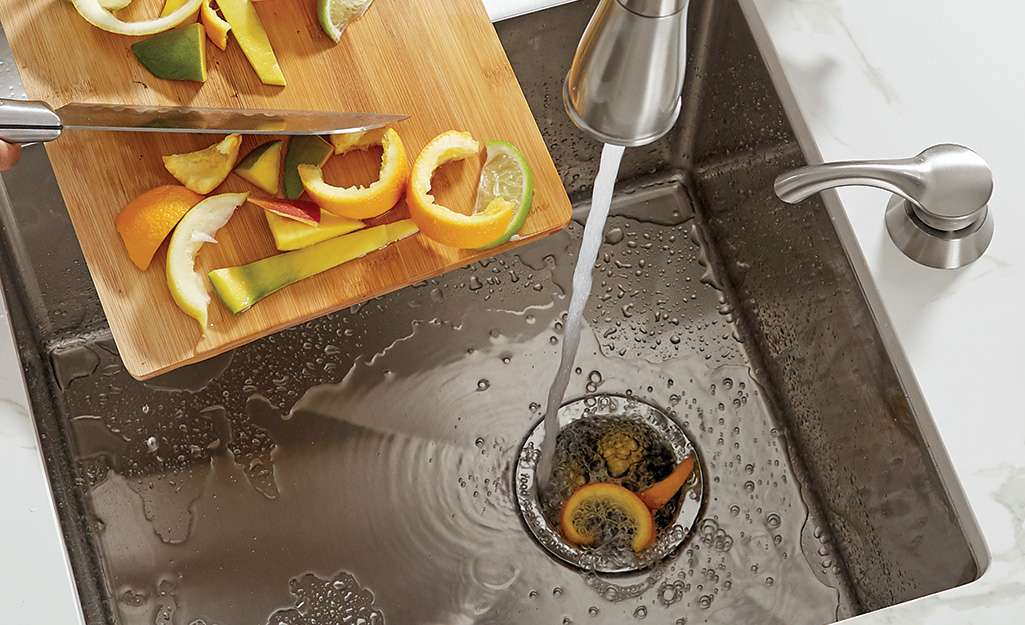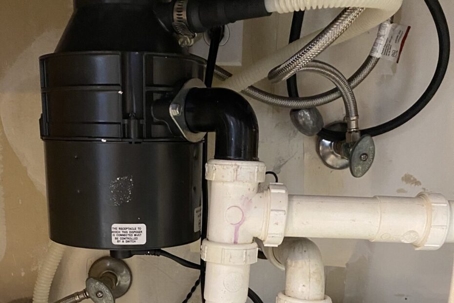Clear Instructions for Repairing a Leaky Waste Disposal
Clear Instructions for Repairing a Leaky Waste Disposal
Blog Article
How do you really feel about Tips on Fixing a Leaking Garbage Disposal?

Waste disposal unit are crucial kitchen area devices that help in taking care of food waste efficiently. Nevertheless, a dripping waste disposal unit can be an irritating and messy problem to handle. The good news is, several leaks can be fixed easily with a few simple steps. In this article, we will discuss how to fix a dripping waste disposal unit effectively.
Intro
Waste disposal unit are set up under kitchen area sinks and are designed to shred food waste right into smaller sized pieces, allowing it to pass through the pipes system quickly. While these devices are generally reliable, leakages can happen in time because of damage, loose links, or damage to the device.
Step-by-Step Overview to Taking Care Of a Leaking Garbage Disposal
Switch off the Power
Before trying any fixings, guarantee that the power to the garbage disposal system is switched off to avoid the threat of electric shock.
Find the Leakage
Identify the precise place of the leakage and determine the cause
Tighten up Connections
Utilize a wrench to tighten up any kind of loose connections between the disposal system and the pipes system.
Change Seals or Gaskets
If the leakage results from worn seals or gaskets, remove the old components and replace them with new ones.
Patching Fractures or Holes
For fractures or holes in the disposal system, use epoxy or a suitable patching material to seal the damaged area.
Identifying the Source of the Leak
Prior to trying to take care of a dripping garbage disposal, it is important to determine the source of the leakage. This can generally be done through aesthetic examination or by carrying out easy tests.
Visual Examination
Check the garbage disposal device very carefully for any indicators of water leakage. Pay very close attention to locations around seals, gaskets, and connection factors.
Checking for Leaks
One method to test for leakages is by running water through the disposal system and looking for any type of noticeable indications of leak.
Common Sources Of Leaks in Garbage Disposals
Worn Seals and Gaskets
Seals and gaskets play an essential duty in avoiding water from leaking out of the garbage disposal. Gradually, these elements can wear away, causing leakages around the disposal unit.
Loose Links
The links in between the garbage disposal and the plumbing system can come to be loosened over time, triggering water to leakage out throughout procedure.
Splits or Openings in the Disposal System
Physical damages to the waste disposal unit, such as splits or openings in the real estate, can additionally cause leakages.
Devices and Products Needed for Taking Care Of a Dripping Waste Disposal Unit
Prior to starting the repair service procedure, gather the required tools and products, consisting of a screwdriver, adjustable wrench, plumbing technician's putty, replacement seals or gaskets, and epoxy or patching material for repairing splits or openings.
Evaluating the Garbage Disposal After Fixing
When the repair work is full, check the garbage disposal by running water with it to ensure that the leak has actually been dealt with.
Preventive Upkeep Tips to Avoid Future Leakages
To prevent future leakages, it is essential to do normal maintenance on your waste disposal unit. This consists of keeping it tidy, preventing placing non-food things or hard items down the disposal, and occasionally looking for leaks or other problems.
Verdict
In conclusion, repairing a leaking waste disposal unit is a relatively simple process that can be completed with fundamental devices and products. By complying with the steps detailed in this article and exercising preventative maintenance, you can keep your garbage disposal in good working condition and stay clear of costly repair work in the future.
What to Do About a Leaking Garbage Disposal
A leaking garbage disposal often goes unnoticed until you confront a sopping cabinet, a foul-smelling puddle, or an audible drip-drip-drip from the unit. The fix can be frustrating, too, because the leak can stem from a number of components in the system. Fortunately, with a little sleuthing, you can zero in on the leak and—depending on the exact location—stop the icky oozing and repair the component that caused it. Worst case scenario, if it turns out that the garbage disposal must be replaced, installing a new one is a reasonable do-it-yourself task for those with basic plumbing skills. Read on to keep the cash you’d otherwise hand over to a pro.
Prepare to find the leak
Prior to testing the garbage disposal for leaks, unplug it at the wall outlet and turn off the power from the breaker box to prevent electrical shock. Then insert a watertight sink stopper into your sink drain and wipe the unit dry with a clean cloth. In any handy container, mix a few drops of food coloring into a few cups of water, and pour the dyed water onto the sink stopper to help you locate the leak.
Investigate the source
the top, where the disposal meets the sink drain the side, where the dishwasher hose or main drain pipe connects to the disposal or the bottom of the unit Inspect each of these locations while gliding a light-colored rag over the unit; the dyed water will readily show on the rag and reveal the location of the leak. If a leak isn’t immediately apparent, remove the sink stopper and pour a few more cups of dyed water down the sink drain, then check for leaks again. Leaks near the top of the unit are more likely to show themselves while the sink is plugged, while side and bottom leaks are more noticeable while the sink is unplugged.
The metal sink flange that sits directly inside the sink drain is typically sealed around the top with plumber’s putty (a clay-like sealant) and then secured from under the sink with bolts. If the plumber’s putty deteriorates, or the bolts loosen, the flange can no longer form a watertight seal between the sink drain and the disposal—which could cause a leak at the top of the unit.
To reseal the leaky flange, you must first detach the garbage disposal. Start by loosening the screws securing the main drain pipe to the disposal, then loosen the screws in the metal clamp securing the dishwasher hose to the disposal and detach the drain pipe and dishwasher hose from the disposal. Loosen the screws in the mounting ring that connects the disposal to the metal mounting assembly beneath the sink, then pull down the disposal and carefully set it on a clean, dry surface. Loosen the bolts in the mounting assembly with a wrench, then pull down the mounting assembly and set it near the disposal.

I stumbled upon that review on How to fix a pretty consistent leak from my garbage disposal while doing a lookup on the web. Liked our blog posting? Please share it. Let someone else find it. Thanks a lot for taking the time to read it.
This Site Report this page